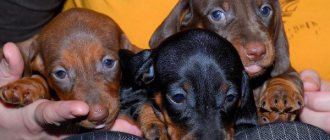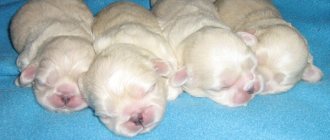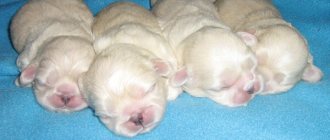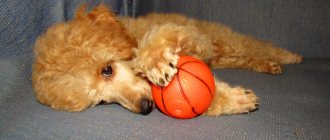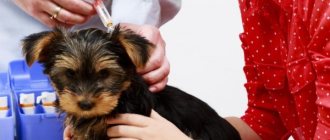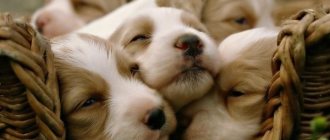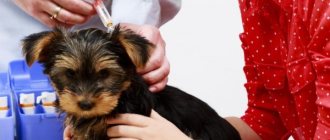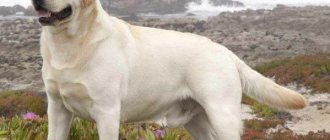Vaccination of Pekingese is practically no different from vaccination of other breeds. However, Pekingese owners should remember that their pets’ bodies can react strongly to foreign substances, even leading to an allergic reaction. But if everything is done correctly, the vaccination will be painless and will protect the puppy’s health for many years.
Grafting Basics
Vaccination is a mandatory procedure that will help preserve the health of your pet. Although she has opponents who argue that after vaccinations the dog may experience side effects.
In fact, before being introduced into veterinary practice, all drugs undergo serious research. Such medications either do not cause negative reactions or are very easy to avoid.
In order for your dog to tolerate vaccination well, it is necessary:
- carry out the procedure only on the recommendations of a veterinarian;
- ensure proper preparation of the animal;
- provide your pet with proper care during the post-vaccination period.
Important! A veterinary passport with marked vaccinations will be required if the owner plans to cross the border with his Pekingese, as well as if the dog will participate in exhibitions.
Answer
The first vaccination for a Pekingese puppy is given at two months of age. Protective immunity in a four-legged friend is developed with the intake of mother's milk; breastfeeding is important. Innate immunity plays an important role in the puppy's later life. Provides protection in the first months from birth and lays the foundation for acquired immunity.
There are many dangers around; a small pet needs protection in the form of vaccinations. Injections will not give a 100% guarantee if hygiene rules are not followed.
Vaccination schedule
Pekingese are vaccinated according to the following scheme:
- first vaccination - at 2 months;
- revaccination - after 2 weeks;
- second vaccination - at 8 months (mandatory after replacing baby teeth with permanent ones);
- third vaccination - after 1 year;
- the fourth and subsequent vaccinations - annually, 11 months after the previous one.
Important! The above time intervals are approximate and may differ depending on the individual characteristics of the dog, as well as the region of its residence.
It is recommended to vaccinate Pekingese with polyvalent drugs that protect against several diseases at once:
- "Nobivak" - protection against distemper, adenoviruses, rabies and parvoviruses.
- "Eurikan" - protection against distemper, rabies, parainfluenza, parvovirus and leptospirosis.
What vaccinations does a Pekingese need?
Examples of such vaccines:
- Eurikan – protects vaccinated dogs from rabies, distemper , parainfluenza, leptospirosis, parvovirus enteritis;
- Nobivak – immunizes against plague, adenovirus and parvovirus infections, rabies;
Other vaccines in this series (Vanguard, Hexadog, Duramun and others) are similar in spectrum to those presented. Combinations of infections in such vaccines are selected to prevent the greatest number of diseases.
How to prepare a puppy for an injection
In order for your little Pekingese to undergo vaccination with the least risk, you must:
What you should pay special attention to
The first vaccination and subsequent revaccination must be done before 4 months, until tooth replacement begins. Otherwise, you can ruin the puppy’s teeth - they will grow yellow and then begin to crumble.
How to care for Pekingese puppies in the first months of life
When Pekingese are just born, in most cases the mother provides all the care for them. If for some reason the dog does not fully perceive the new position and the maternal instincts are still dormant in it, then it is important to free the puppy from feces and urine on the first day.
This is done by massaging the genital area and anus with a damp cloth or cotton wool soaked in warm water.
You need to drive gently, in a circular motion clockwise and back. But usually this procedure is carried out by the mother, who licks the babies.
Important! Every day it is necessary to change the lining in the basket or other place where the mother and cubs are kept. It is better to put soft diapers there that are easy to wash.
Until the age of 1 month, puppies do not require additional feeding , since the mother feeds them herself. At about two weeks old, Pekingese dogs open their eyes and begin to explore the world. It is important to keep an eye on them so that they do not crawl into an unsafe place.
Pekingese puppies weight
| Birth weight (grams) | 150–170 | 180–200 | 200–250 |
| 1 month | 500–800 | 800–1000 | 1000–1300 |
| 2 months | 800–1000 | 1300–1500 | 1500–2000 |
| 3 months | 1000–1200 | 1500–1700 | 2000–3000 |
| 6 months | 1300–1500 | 1800–2000 | 3000–3300 |
| 8 months | 1500–1700 | 2200–2500 | 3300–3800 |
| 11 months | 1800–2000 | 2500–3000 | 3800–4500 |
| 12 months | 2000–2200 | 3000–3500 | 4500–5000 |
| 18 months | 2200–2500 | 3200–3500 | 5500–6000 |
| small | average | large |
The puppy weight chart is approximate, and to fully understand whether the weight is normal or excessive, consultation with a veterinarian is necessary. Pekingese are divided into three weight categories : up to 2.5 kg, 3.2–3.5 kg and 4–6.5 kg.
It happens that a large dog can develop a dwarf Pekingese. Such babies are in special demand, but they require even more careful care than their larger counterparts.
Puppy care
The main care for Pekingese puppies is to examine the baby's nose, ears, and jaw every day . If an unpleasant odor appears from the ears, it is necessary to wipe the inside of the ear with a cloth soaked in hydrogen peroxide. also important to wipe the crease under the nose of these dogs with a damp cotton swab .
The dog's coat should be carefully combed once every two days to prevent tangles from appearing on the dog. The puppy should be washed or wiped with a damp cotton cloth around the genital area and under the tail. Small puppies are covered with undercoat (baby hair), it is important to remember that you cannot wash growing Pekingese during the shedding period.
In order for
the change of teeth to go smoothly , you need to constantly consult with a veterinarian and buy a special bone that the baby can gnaw on. Nails are trimmed monthly using special scissors - nail clippers.
What to feed a Pekingese puppy in the first months of life?
When the puppies are one month old, you can begin to slowly wean them from their mother , introducing complementary foods into their main diet. Weaning occurs by removing the babies to another bed, which should also be in a fairly warm place where there are no drafts.
Or you can leave the puppies in their basket, but take the mother away for a while.
Options for first feeding for puppies can be the following: baby cottage cheese, milk porridge (ground rolled oats) or meat that is prepared in a special way.
- Baby cottage cheese is diluted with warm milk, but since the puppies do not yet eat on their own, complementary feeding is carried out from a syringe. The main thing is to squeeze out small portions so that the puppy has time to swallow. Or you can let the curd lick off your finger.
- The porridge is prepared simply - crushed rolled oats (1 tablespoon), poured into 150 ml of water, brought to a boil, then turn off the gas and leave the rolled oats for 5 minutes. Cool for 10 minutes, then rub the mixture through a fine sieve in a saucer. Add a drop of honey and a little cream or full-fat milk to the resulting thick composition (jelly). Puppies lick food if they can, and very young children receive it through a syringe.
- meat for Pekingese is beef or veal. A layer is scraped off a piece of frozen meat with a knife, placed on a saucer, and when it is defrosted, this semi-finished product is given to the puppies.
Important! Ground beef should not be given until 2 months of age, as this type of meat is too rough.
One month old puppies can replace one feeding out of six with complementary foods , gradually increasing the number of complementary foods and reducing feeding with mother's milk.
The number of feedings for puppies up to 3 months is 5-6, 4-month-old Pekingese are fed 4 times a day , six-month-olds - 3 times a day, and from 9-10 months the dog already eats 2 times a day - in the morning and in the evening. Most often, breeders give away puppies at 2–3 months, so by this time the babies should be ready for independent life.
Advice! Try to train yourself to feed and walk your Pekingese at the same time - this breed loves consistency and order.
Having taken a puppy from the nursery, you need to find out what his diet was like , and leave it the same or transfer it gradually (replacing one feeding per week) to another option.
There is no clear answer to the question of which diet (natural or dry food) is better. The main thing is that the animal is healthy and receives all its vitamins.
You can give your puppy the following foods:
- rice, buckwheat, millet, rolled oats;
- beef, chicken, veal and turkey;
- vegetables and fruits (not citrus fruits);
- cottage cheese, kefir, eggs;
- boiled fish without bones.
How the dog feels after vaccination
Sometimes a puppy may develop swelling at the puncture site. This is not a deviation from the norm. But if the vaccination site becomes red, swollen, or swelling does not go away after 3 weeks, you should contact your veterinarian.
In addition, within 24 hours after the injection, the Pekingese may have the following reactions:
- body temperature over 39 ºС;
- reluctance to eat;
- diarrhea or vomiting (one-time);
- lethargy, apathetic state.
This is also not unusual. As a rule, the puppy returns to normal the next day. But if your pet’s condition does not improve, you should consult a veterinarian.
Raising a Pekingese
Many owners note: Pekingese is a capricious breed of dog , which is inherent in it at the genetic level. But this does not mean that it is impossible to teach a dog basic commands. Pekingese need time with their owner and their attention, so if your puppy is barking too much, you may not be giving him enough time.
The first commands should be learned as soon as the puppy gets to its new home. This way he will receive social adaptation, otherwise, going out for the first time with a curious and brave puppy who does not know the command “Fu!” or “You can’t!” .
You will have to use your hands to remove from your pet’s mouth everything tasty that he smells and gets his teeth into. Repeating commands should be accompanied by constant praise of the pet and the provision of treats prepared with one’s own hands at home.
Advice! Exercise your dog for half an hour a day, every day or every other day. Then in a month the baby will have a clear understanding of commands and a desire to carry them out.
Mastering the tray
Puppies go to the toilet after waking up or after eating. Therefore, the awakened Pekingese is immediately taken to a plastic tray with a grid, on which a disposable diaper is placed. If the puppy went to the toilet there, then continue this every day.
If he makes a puddle on the floor, then blot the newspaper in it and put it in the tray. The puppy will smell the smell and come to the toilet. Not the first time, but after some time the small, clean Pekingese will get used to the litter box.
Adult vaccinated dogs should be allowed to walk outside, as this breed tends to be lazy and play only at the owner's initiative.
Leash and collar training
Accustoming to a collar and leash is the same element of the educational process as teaching basic commands. For a young Pekingese, you need to buy a nylon (silk) or thin leather leash, which you should start putting on him from the age of 2 months for a couple of hours a day.
Under no circumstances should a dog wear this accessory all the time, as the fur may become chafed. You should buy a collar according to the size of the dog so that it does not put pressure and is not too heavy.
When the baby stops paying attention to the collar being put on, you should fasten the leash and play with the dog. The Pekingese must understand that a leash and collar are elements of outdoor play.
Important! Pekingese cannot be hit with a leash! You cannot hit with any objects. You can scold him by telling the dog his mistake in a serious tone and pointing it out, but you cannot touch the dog. Pekingese are touchy and vindictive. By being harsh towards your pet, you will ruin the relationship and end up with an irritated, frightened animal.
The ideal option for getting used to walking would be walking with someone you know who has an adult dog that is adapted to the street. The Pekingese puppy will simply copy her behavior during a walk and will be less frightened by various noises.
Vaccination, obtaining a passport
Vaccination is a mandatory step, without which the dog will not be taken to the exhibition due to the risk of infection with a virus dangerous to animals. With the first vaccination, the puppy is issued a veterinary passport, which contains information about the first and subsequent vaccinations.
A standard passport with a number is issued in the name of the dog owner and registered in the veterinary hospital book.
Precautions and prevention of complications:
- only a healthy animal is vaccinated;
- Before vaccination, the temperature is measured; the readings are required to be within normal limits;
- worms are driven away using special preparations;
- vaccination is carried out exclusively by an experienced veterinarian under sterile conditions;
- mandatory verification of the expiration date and name of the drug;
- the vaccine is purchased at a veterinary pharmacy or animal clinic;
- The vaccine is stored in the refrigerator, but not in the freezer.
The vaccine is given in the morning, on an empty stomach. On this day, the puppy is recommended complete rest, diet, and plenty of fresh water. The first 24 hours will be difficult for the dog. The baby becomes lethargic, refuses to eat, and has a dry and warm nose. This is normal, you need to get through the period. After 24 hours, the baby will return to its normal state.
What to feed for the first 3 months?
In the first 3 months, the baby should be fed only natural food, which should include:
- Boiled lean meat minced in a meat grinder.
- Boiled eggs.
- Fresh or stewed vegetables that do not cause bloating (beets, carrots, zucchini, cucumber, etc.).
- Fermented milk products (kefir, yogurt, yogurt, cottage cheese).
- Lean sea fish without bones.
- Oatmeal, buckwheat or rice porridge.
Development from 1 to 12 months
| Pet age | Size | Weight | Description |
| 1 month | 15-20 cm in length | At the end of the period - weight 500-700 g. | In the first month of life, the puppy feeds on its mother's milk. Starting from 3 weeks of age, the dog already shows interest in solid food. A Starting from 14 days, his eyes and ears come off, and his intestines begin to work independently. |
| 2 months | 25-35 cm in length | 800-1100g | The baby masters the principles of social behavior, he has already developed all physiological functions, and he also completely switches to solid food. In the middle of the 2nd month, the puppy is gradually weaned from its mother. |
| 3-4 months | 8-10 cm at the withers | 1.2-2 kg | The baby's teeth begin to change, and signs of character also appear. At this age, the pet awakens to its individuality. |
| 4-6 months | 10-12 cm at the withers | 2-5 kg | The dog gains significant height and weight, and also begins to show interest in the opposite sex. |
| 7-9 months | 12-15 cm at the withers | 3-6 kg | Now this is a teenage dog, the pet’s character and habits have already been practically formed, and active hormonal changes associated with puberty begin in the body. |
| 10-12 months | 15-25 cm at the withers | 5-7 kg | At this age, females begin their first heats, and males become more active, marking their territory and trying to take a higher place in the hierarchy. |
How to feed?
A 2-month-old puppy is usually fed 6 small meals a day.
At 3-4 months old, a baby can already eat 4-5 times a day, with portions being slightly increased.
From 5 to 9 months the pet is fed 3 meals a day.
And from 10 months he is fed 2 times a day, morning and evening.
Menu for the week
Monday:
- Breakfast – oatmeal with liver.
- Lunch – boiled beef.
- Dinner - cottage cheese.
- Breakfast - curdled milk.
- Lunch – rice porridge with heart.
- Dinner - stewed zucchini and a piece of fish.
- Breakfast - boiled egg.
- Lunch – heart or liver with buckwheat.
- Dinner – baked pumpkin with rice.
- Breakfast - yogurt.
- Lunch – veal with fresh carrots.
- Dinner – rice porridge with stewed beets.
- Breakfast – boiled carrots with a piece of fish.
- Lunch – buckwheat porridge with heart or tripe.
- Dinner – cottage cheese or kefir.
- Breakfast – veal with fresh cucumber.
- Lunch – oatmeal with yogurt.
- Dinner – stewed zucchini.
Sunday:
- Breakfast - cottage cheese or yogurt.
- Lunch – beef tripe with rice porridge.
- Dinner – baked pumpkin.
How to choose your future pet?
Before you make your choice, you should think about why you need a puppy and what class of pet you need.
If you just need a pet, then a pet-class dog is quite suitable. If the goal is breeding, but you need a puppy of at least breed class level. If you want your dog to take prizes at exhibitions, you will have to purchase a show-class pet and this will not be cheap.
In addition, the dog must have all the necessary documents and a veterinary passport.
The next stage is choosing a seller. Under no circumstances should you buy a puppy at a poultry market or online. You must see the dog in person, talk to the breeder, and also evaluate the conditions in which the dogs live in the kennel.
If the breeder is not ready to provide the necessary documents, then most likely the puppy was born as a result of an unscheduled mating, and subsequently you will not be able to prove its origin. Such a dog has no access to exhibitions and breeding work and is only suitable as a pet.
At the same time, a conscientious breeder is always ready to provide all the necessary documents and information, as well as help after the purchase.
The next step is to examine the puppy itself.
Signs of a healthy pet:
- The eyes are clear, shiny without discharge or inflammation.
- Clean nose and ears.
- Shiny and shiny coat.
- The puppy must be active and inquisitive.
- The pet's limbs must be strong and healthy; lameness is unacceptable.
